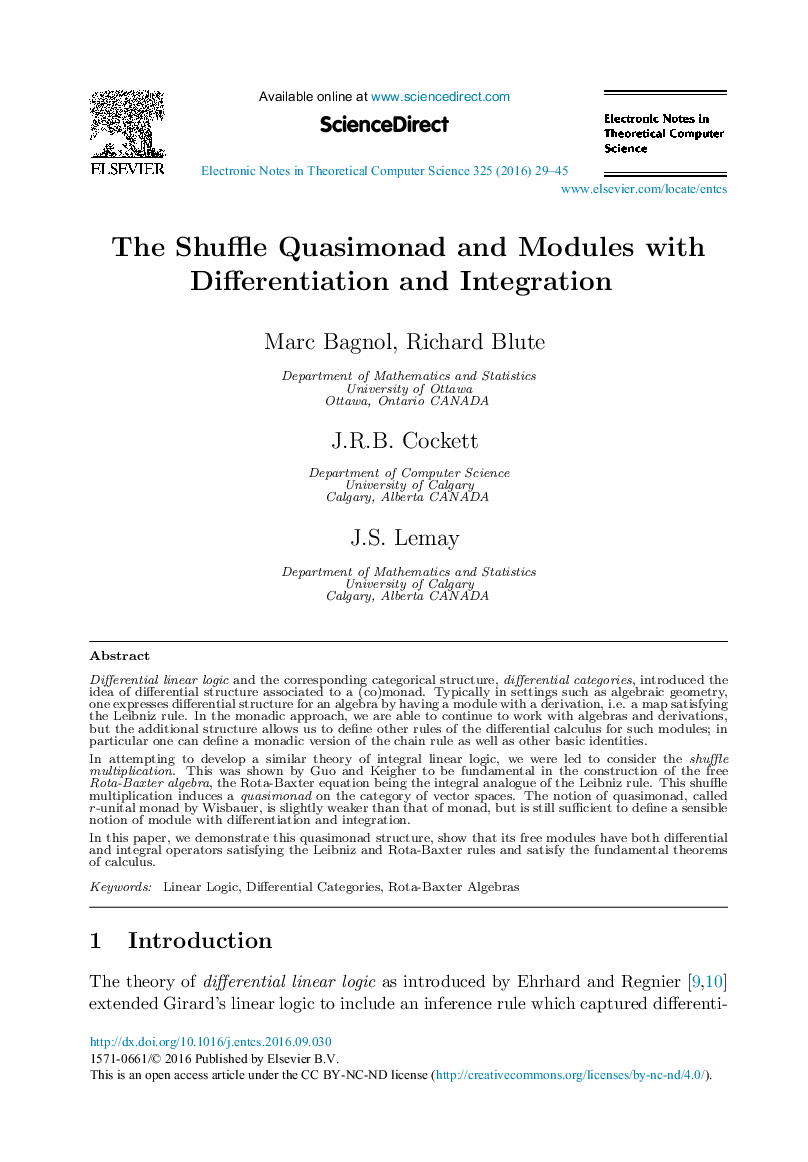| Article ID | Journal | Published Year | Pages | File Type |
|---|---|---|---|---|
| 4950053 | Electronic Notes in Theoretical Computer Science | 2016 | 17 Pages |
Differential linear logic and the corresponding categorical structure, differential categories, introduced the idea of differential structure associated to a (co)monad. Typically in settings such as algebraic geometry, one expresses differential structure for an algebra by having a module with a derivation, i.e. a map satisfying the Leibniz rule. In the monadic approach, we are able to continue to work with algebras and derivations, but the additional structure allows us to define other rules of the differential calculus for such modules; in particular one can define a monadic version of the chain rule as well as other basic identities.In attempting to develop a similar theory of integral linear logic, we were led to consider the shuffle multiplication. This was shown by Guo and Keigher to be fundamental in the construction of the free Rota-Baxter algebra, the Rota-Baxter equation being the integral analogue of the Leibniz rule. This shuffle multiplication induces a quasimonad on the category of vector spaces. The notion of quasimonad, called r-unital monad by Wisbauer, is slightly weaker than that of monad, but is still sufficient to define a sensible notion of module with differentiation and integration.In this paper, we demonstrate this quasimonad structure, show that its free modules have both differential and integral operators satisfying the Leibniz and Rota-Baxter rules and satisfy the fundamental theorems of calculus.
